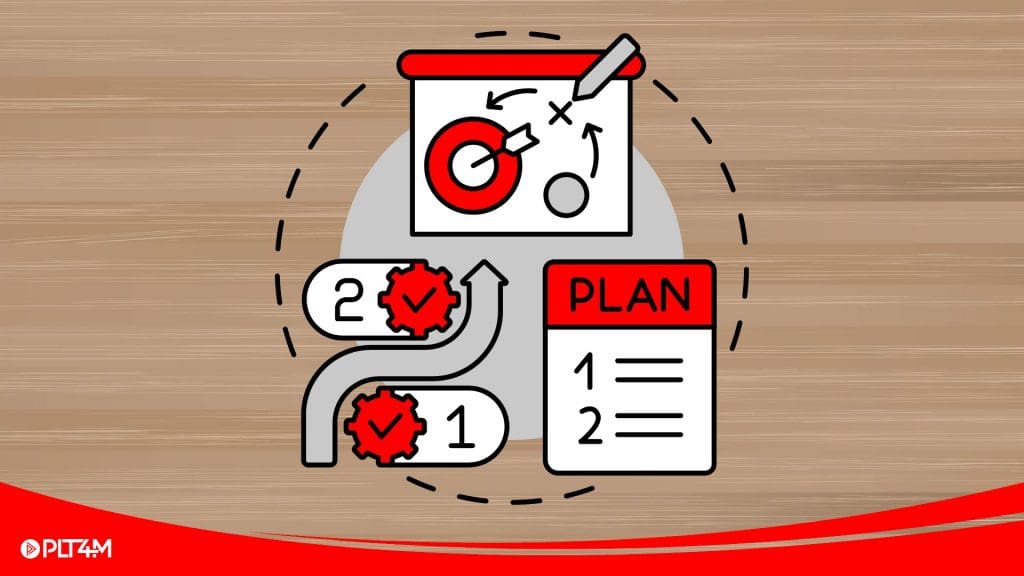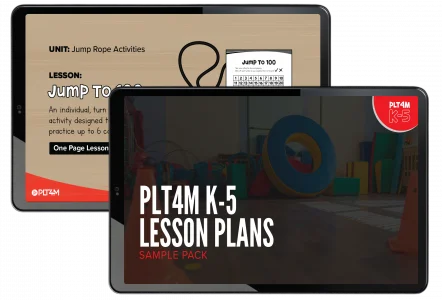Elementary physical education curriculum plays a vital role in developing students’ physical literacy, motor skills, and overall well-being. In this blog, we break down the key components of effective PE curriculum planning and execution.
As an added bonus, we hear directly from K-5 PE teacher Mike Graham, who shares his expert approach to curriculum design, along with practical strategies and resources to help educators create engaging and adaptable lesson plans.
Importance Of Elementary Physical Education Curriculum
Elementary physical education plays a crucial role in laying the foundation for lifelong physical literacy. At a young age, elementary students are introduced to the essential movement skills and fundamental motor patterns that will serve as building blocks for future physical activity.
A well-structured elementary physical education curriculum ensures that students develop motor skills and knowledge for long-term physical literacy. However, its benefits extend far beyond just physical development.
One of the most significant advantages of an elementary physical education program is its impact on social-emotional growth. Through a variety of cooperative games and structured activities, students learn critical life skills such as teamwork, communication, and problem-solving.
Group activities and partner-based exercises help foster personal social behavior, social interaction, and more. These experiences are invaluable as they contribute to character building, conflict resolution, and self-regulation, skills that are transferable to both across academic and social settings.
Get Free Sample Lessons!
Explore our K-5 Curriculum with these select Lesson Plans from some of our most popular Units. Each lesson includes a one page lesson overview, equipment checklist, game setup, teaching cues, standard alignment and more!
Challenges of Elementary Physical Education Curriculum Planning
Despite its importance, planning an effective elementary physical education curriculum presents several challenges for educators.
One of the primary difficulties lies in aligning lessons with state and national standards. Teachers must ensure that they are covering a broad spectrum of physical education standards and benchmarks, including motor skill development, health-related fitness concepts, and social-emotional learning components, all within a limited timeframe.
Another challenge is managing the wide range of grade levels within an elementary school. For example, kindergarteners and first graders require vastly different instruction compared to fourth and fifth graders, both in terms of physical ability and cognitive understanding.
Teachers must design activities that cater to different developmental stages while maintaining consistency in their curriculum. This often means creating multiple lesson plans for different grade levels, which can be time-consuming and demanding.
Lastly, finding quality resources to support curriculum planning can be difficult. While there are countless online platforms, books, and professional development opportunities available, resources are often scattered and not centralized in one accessible location.
Physical educators often struggle to find well-structured lesson plans, age-appropriate activities, and assessment tools that align with their specific goals. As a result, many educators spend significant time piecing together materials from multiple sources to build a cohesive and effective physical education program.
Navigating these challenges requires a strategic approach, ongoing professional development, and collaboration with fellow educators. By addressing these hurdles head-on, schools can ens
Elementary Physical Education Curriculum Planning
Looking for ideas on how to tackle elementary physical education curriculum planning? Check out Mike Graham’s approach. Mike is an experienced elementary PE teacher and founder of PE 4 Every Kid. Here is how he does it:
Start with the Big Picture: Mike uses a simple spreadsheet to map out his school year, dividing it into three trimesters (change as needed for quarters or semesters.)
Plan Around Key Dates: Mike first inputs vacations, holidays, and half-days to establish a foundation for his curriculum plan.
Plug in Units & Skills: After setting the framework, he assigns PE units and skills across the year to ensure a balanced and comprehensive curriculum.
Adaptability is Key: While he creates a structured plan, it remains a working document to accommodate field trips or unexpected events.
After the initial steps are done, Mike explains what comes next,
“Once you’ve filled in all the spaces with the things you want to teach, you’re done. The year is planned. Now, it’s time to decide on the lessons and activities—and that’s where PLT4M comes in.”
PLT4M’s Elementary Physical Education Curriculum
As part of its K-5 expansion, PLT4M is excited to offer a wide range of materials and activity options designed to meet the diverse needs of elementary physical education programs. With a focus on fun, engagement, and skill-building, the elementary physical education curriculum includes activities across the following categories:
Tag Games
Invasion Games
Movement and Fitness
Cooperative Activities
Instant Activities
Jump Rope Activities
Throwing & Catching
Batting
Soccer
Bowling
Basketball
Floor Hockey
Scooters
….More to come!
Get Free Sample Lessons!
Explore our K-5 Curriculum with these select Lesson Plans from some of our most popular Units. Each lesson includes a one page lesson overview, equipment checklist, game setup, teaching cues, standard alignment and more!
Elementary PE Lesson Plan Structure
Each elementary pe lesson plan is thoughtfully designed to ensure educators have everything they need for physical education class. Every lesson will include the following key components:
Equipment Checklist: A detailed list of all required materials to help teachers prepare with ease.
Key Skill Teaching Cues: Simple, effective prompts to help students grasp fundamental skills.
SHAPE Standard Alignment: All elementary PE lesson plans are aligned with SHAPE America standards to ensure high-quality, standards-based physical education.
Game Set Up: Clear and concise instructions for organizing the activity or game.
Instructions: Step-by-step guidance to facilitate seamless lesson delivery.
Best Practices and Modifications: Tips to optimize the lesson for different skill levels, class sizes, grade levels, or available equipment.
Printouts and Resources: Supplemental materials tailored to the specific lesson, including visual aids, diagrams, and student handouts.
With this comprehensive approach, PLT4M’s elementary physical education curriculum will empower teachers to deliver engaging, standards-based lessons.
Below is a sample lesson called Jump To 100 from our jump rope activities for elementary PE.
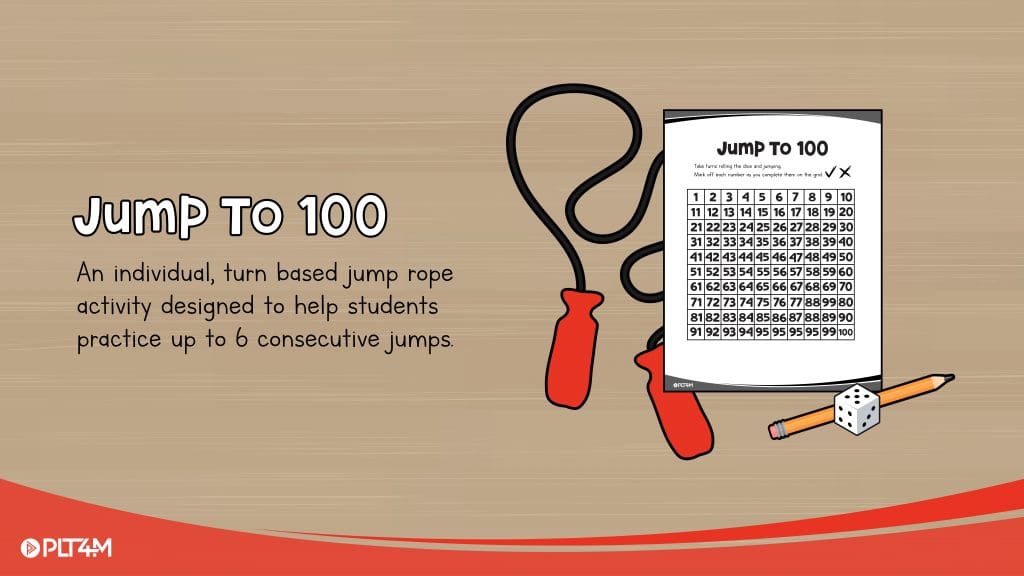
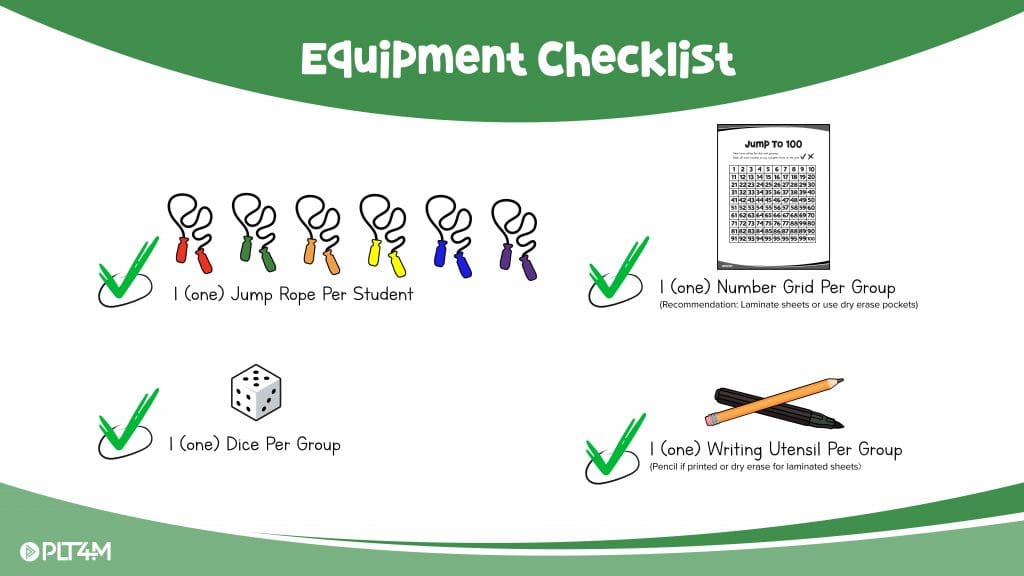
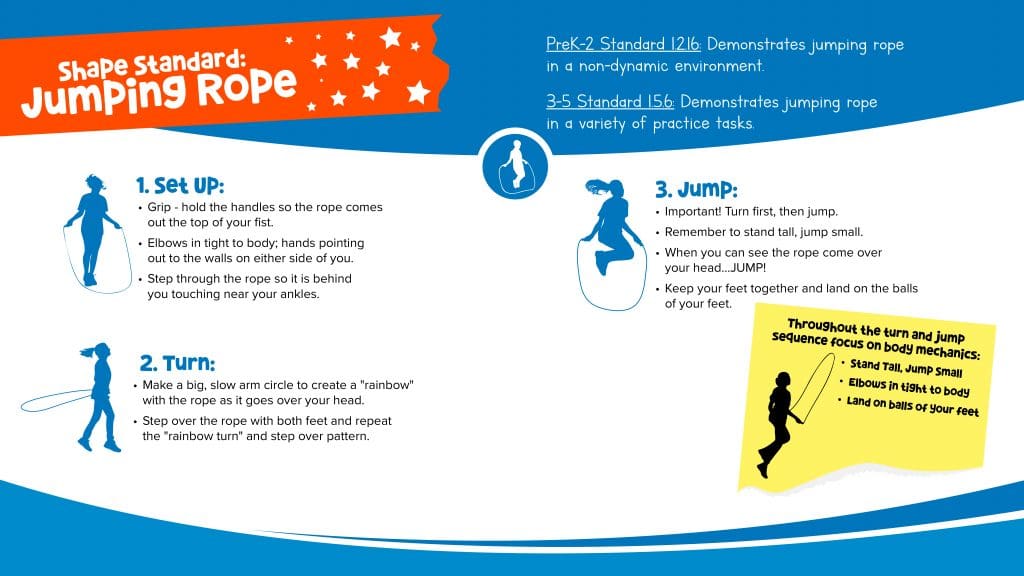
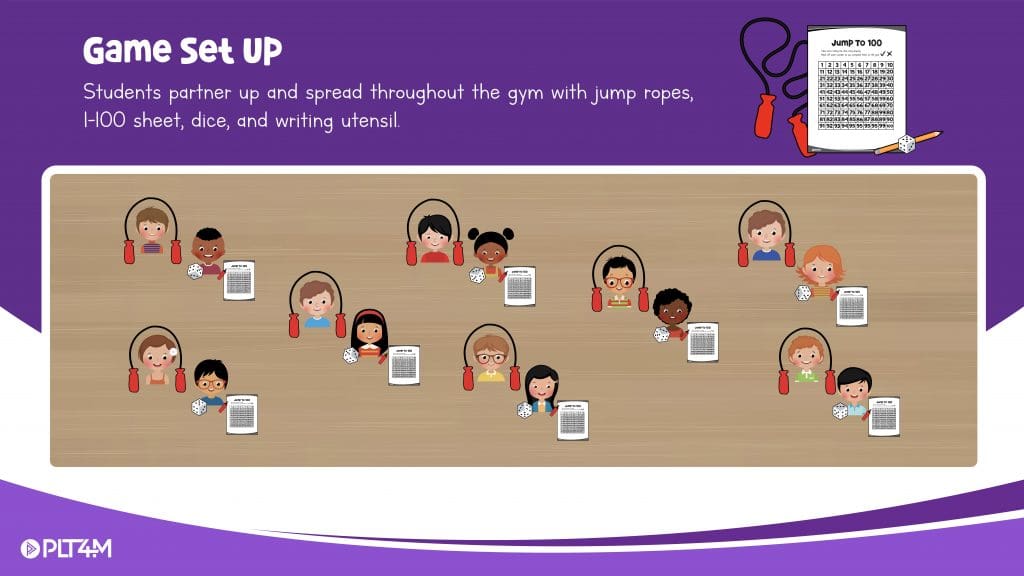
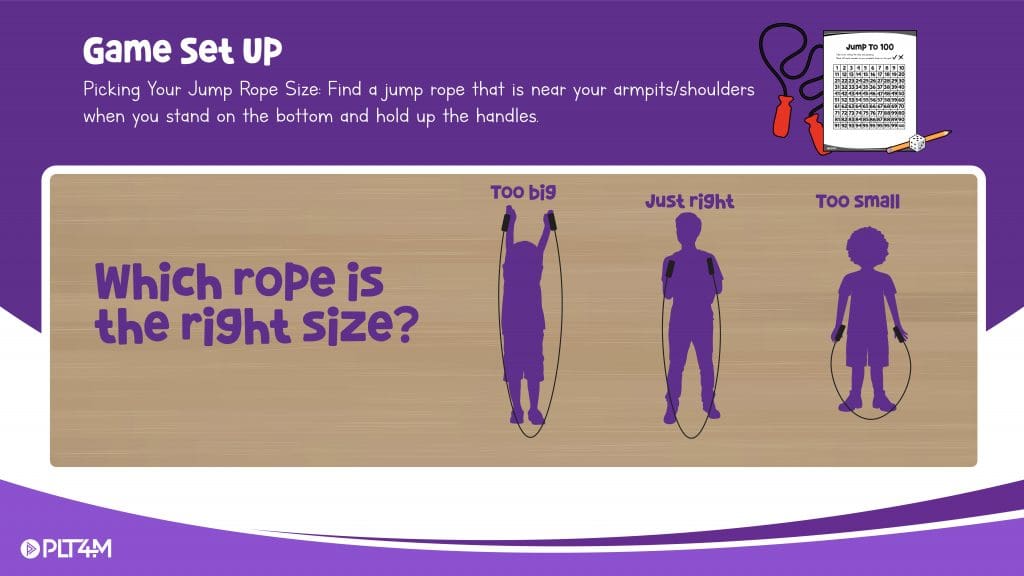
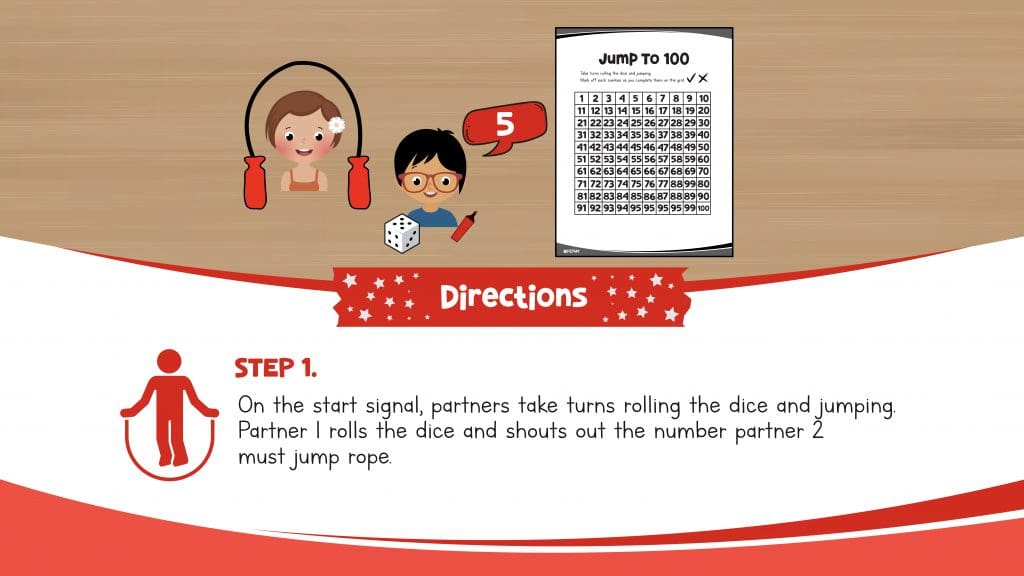
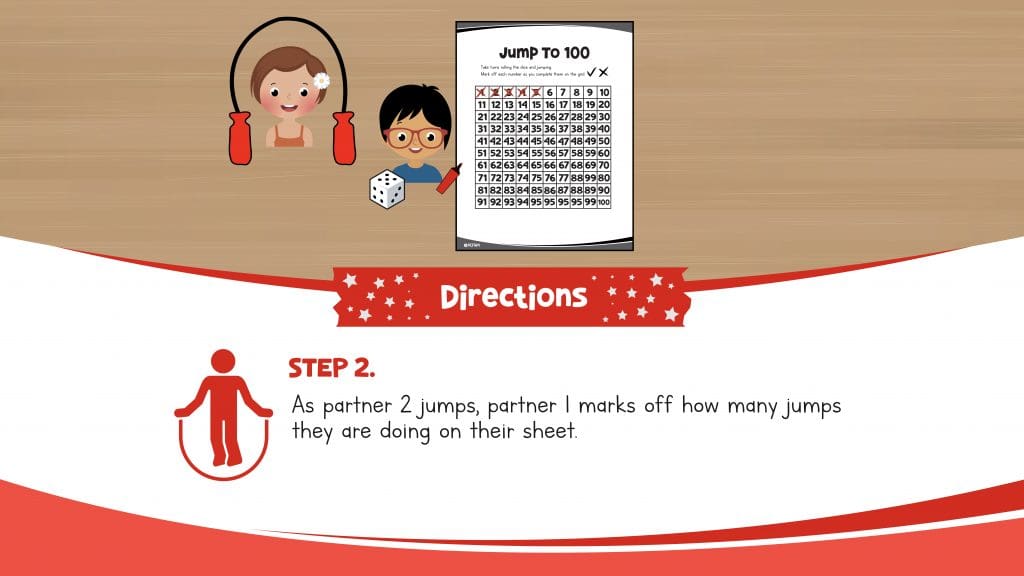
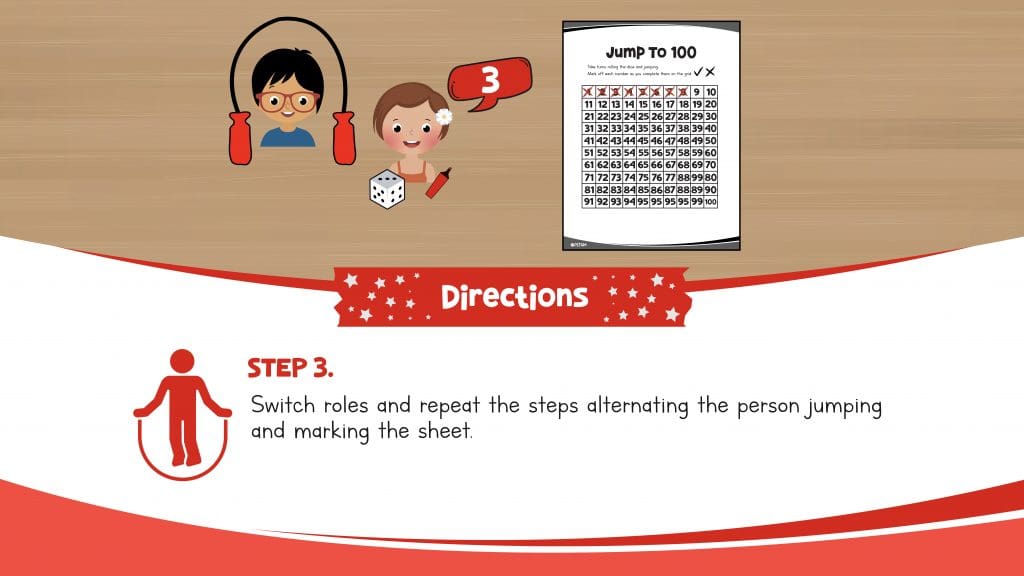
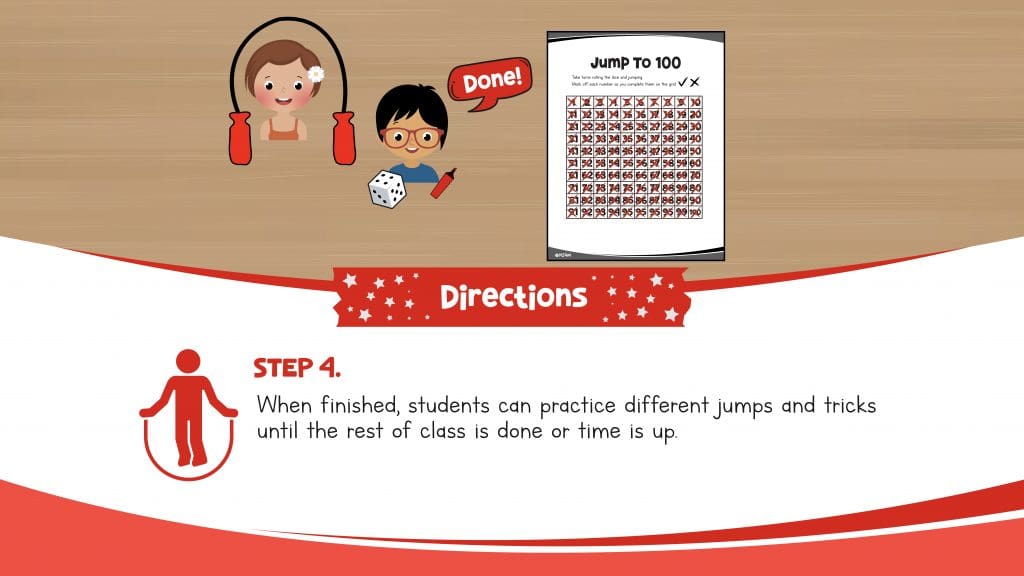
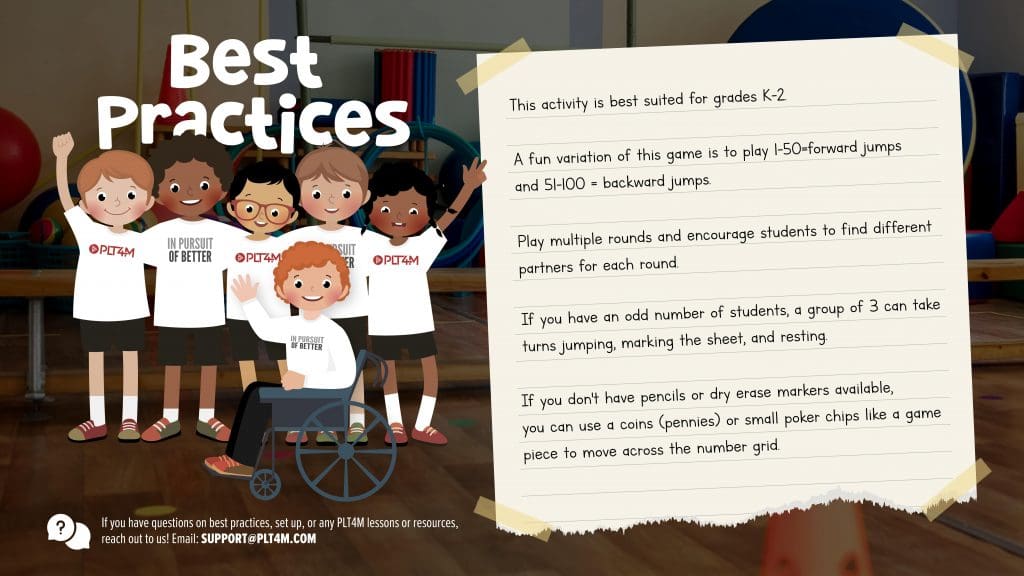
Key Takeaways On Elementary PE Curriculum
There’s a Lot to Cover – Elementary PE spans multiple grade levels, each with different developmental needs. From fundamental movement skills in kindergarten to more advanced activities in upper grades, planning can feel overwhelming.
Start with a High-Level Plan – Laying out a yearly or semester-based framework helps ensure a balanced approach to skill progression, standards alignment, and student engagement. Mapping out units and key concepts first makes lesson planning more manageable.
Use Trusted Resources – Instead of reinventing the wheel, leverage high-quality PE resources, lesson plans, and curriculum tools designed for elementary educators. These materials can save time and provide structured, effective activities.
You’re Not Alone! – PE teachers don’t have to do it all by themselves. Collaborate with fellow educators, join professional networks, and tap into expert insights—like those from experienced K-5 PE teacher Mike Graham—to create an engaging and adaptable curriculum.
By starting with a clear plan and utilizing trusted resources, elementary PE teachers can streamline their workload and focus on what matters most—helping students develop a lifelong love for movement and fitness through quality elementary physical education curriculum.
